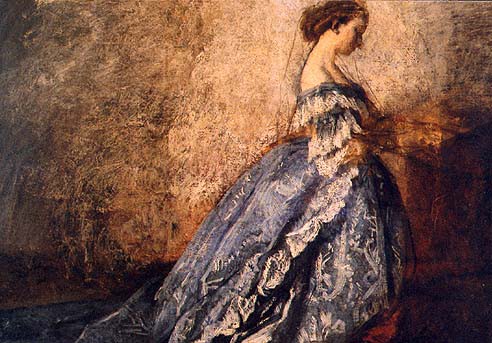Alongside the Tuileries, Saint-Cloud and Fontainebleau, Compiègne was one of the palaces where the imperial couple and the court regularly resided. Indeed it was one of the preferred houses because of the freer lifestyle which reigned, in that respect for etiquette weighed less heavily there. Compiègne also played a key role in lives of the imperial couple, for it was here that the relationship between Eugénie de Montijo and Napoleon III blossomed into romance, and – one month later – marriage. As a result, the empress always had a soft spot for the place.
It was in the Autumn of 1856 that the imperial couple in residence at Compiègne received their first 'series' of invitees – what was to become (apart from 1860 and 1867) an annual event. For a month and half, 80 to 100 guests were invited to spend eight days at the château. In addition to the receptions, at which princes, diplomats, members of government, scientists, authors and artists rubbed shoulders, many different forms of entertainment were laid on, notably hunting in Compiègne Forest and a visit to the château of Pierrefonds, at that time being restored by Viollet-le-Duc. During the day there were charabanc rides, games in the park or in the garden, whilst at night dances, gaming and the performance of plays (49 between 1852-1869) took place in the salons. Amateur theatre was particularly appreciated with guests participating in charades, pantomimes, tableaux vivants and other theatrical games.
As the autumn residence for the imperial court, the château de Compiègne was the obvious choice for the Musée du Second Empire. Formed in 1953 from objects which had been in the house since 1870, acquisitions, donations and loans, it is more a museum of atmosphere than a panorama of the history or art of the period. There are fifteen rooms and in them hang some important paintings of Key figures from the period, notably: 'Napoleon at Solferino' by Meissonnier, 'The Empress surrounded by her ladies in waiting', 'The Duchess of Morny' and 'Napoleon III' by Winterhalter, princess Mathilde's apartments by Giraud, Couture's studies for the baptism of the prince imperial. The Salles Carpeaux – containing a plaster group entitled 'Ugolin and his children', an allegory of Temperance, busts and statues of the imperial family including the magnificent (unfinished) bust 'Napoleon III', studies and paintings of the 'Fête impériale', etc. – are particularly noteworthy. The visit ends with Meissonier's famous work symbolising the fall of the empire 'The ruins of the Tuileries palace'.
The annexe to the Second Empire museum, the Musée de l'Impératrice, holds a collection of objects relating to the imperial family, dating from the childhood of Louis-Napoleon up to the death of the prince imperial in Zululand in 1879.
Compiègne Itinerary
Musée du Second Empire – Musée de l’Impératrice – Compiègne


